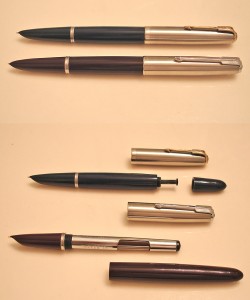Good morning, Whitewater.
A new month begins, with only four days until Tuesday’s election. We’ll have sunny skies and a high of forty-five in the Whippet City.
The FW Halloween poll results are in, and vampires have won the most responses, with 32.26% of the total. Last year, with the same choices available, ghosts led with 28.89%.
What’s it look like – observed closely – when a drop of water hits a pool of that same liquid? It look like this, as recorded by scientists of fluid dynamics in Brazil:
On this day in 1952, America first tests a hydrogen bomb:
The idea of a thermonuclear fusion bomb ignited by a smaller fission bomb was first proposed by Enrico Fermi to his colleague Edward Teller in 1941 at the start of what would become the Manhattan Project.[3] Teller spent most of the Manhattan Project attempting to figure out how to make the design work, to some degree neglecting his assigned work on the Manhattan Project fission bomb program. His difficult and devil’s advocate attitude in discussions led Robert Oppenheimer to sidetrack him and other “problem” physicists into the super program to smooth his way.
Stanislaw Ulam, a coworker of Teller, made the first key conceptual leaps towards a workable fusion design. Ulam’s two innovations which rendered the fusion bomb practical were that compression of the thermonuclear fuel before extreme heating was a practical path towards the conditions needed for fusion, and the idea of staging or placing a separate thermonuclear component outside a fission primary component, and somehow using the primary to compress the secondary. Teller then realized that the gamma and X-ray radiation produced in the primary could transfer enough energy into the secondary to create a successful implosion and fusion burn, if the whole assembly was wrapped in a hohlraum or radiation case.[3] Teller and his various proponents and detractors later disputed the degree to which Ulam had contributed to the theories underlying this mechanism. Indeed, shortly before his death, and in a last-ditch effort to discredit Ulam’s contributions, Teller claimed that one of his own “graduate students” had proposed the mechanism.
The “George” shot of Operation Greenhouse of 9 May 1951 tested the basic concept for the first time on a very small scale. As the first successful (uncontrolled) release of nuclear fusion energy, which made up a small fraction of the 225kt total yield,[19] it raised expectations to a near certainty that the concept would work.
On November 1, 1952, the Teller–Ulam configuration was tested at full scale in the “Ivy Mike” shot at an island in the Enewetak Atoll, with a yield of 10.4 megatons (over 450 times more powerful than the bomb dropped on Nagasaki during World War II). The device, dubbed the Sausage, used an extra-large fission bomb as a “trigger” and liquid deuterium—kept in its liquid state by 20 short tons (18 metric tons) of cryogenic equipment—as its fusion fuel, and weighed around 80 short tons (70 metric tons) altogether.
A pen magnate is born on this day in 1863:
1863 – George Safford Parker Born
On this date George Safford Parker was born in Shullsburg. While studying telegraphy in Janesville, he developed an interest in fountain pens. In 1891 he organized the Parker Pen Company in Janesville. The company gained world-wide acclaim for innovations like the duo-fold pen and pencil. Parker served as president of the company until 1933. Parker died on July 19, 1937. [Source: Dictionary of Wisconsin Biography, p.280]

